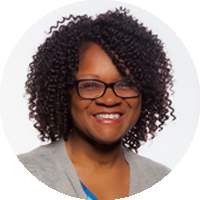
Among those affected by the COVID-19 pandemic, those who earned the least suffered the greatest economic impact. That observation is among many other findings in the Federal Reserve’s latest Report on the Economic Well-Being of U.S. Households published in May.
The results are based on an online survey the Fed conducted with more than 12,000 people in the fall of 2019. This past April, the Fed administered a supplemental survey to 1,000 of those respondents to gain insights about initial effects of the COVID-19 pandemic. That survey found that 39 percent of people working in February in a household with income below $40,000 lost a job in March—meaning that workers in households earning less than $40,000 a year were three times more likely to have lost a job in March than those living in households with annual earnings of more than $100,000.
Since that supplemental survey, more people have faced layoffs, while some started returning to work when states began reopening after coronavirus lockdowns. The number of workers filing for unemployment benefits came to 1.3 million for the week that ended July 11, the U.S. Labor Department reported in mid-July. Across the Atlanta Fed’s coverage area, which includes the states of Alabama, Florida, and Georgia and parts of Louisiana, Mississippi, and Tennessee, unemployment rates are now significantly higher than they were in February 2020 (see the table).
| Southeastern Unemployment Rates | February 2020 | June 2020 |
| Alabama | 2.4 percent | 7.5 percent |
| Florida | 2.8 percent | 10.4 percent |
| Georgia | 3.1 percent | 7.6 percent |
| Louisiana | 5.2 percent | 9.7 percent |
| Mississippi | 5.4 percent | 8.7 percent |
| Tennessee | 3.4 percent | 9.7 percent |
| Source: U.S. Bureau of Labor Statistics |
The Survey of Household Economics and Decisionmaking, an annual survey that the Federal Reserve Board of Governors has conducted since 2013, examines a range of topics including income, home ownership, and retirement. The results show differences by race, age, and gender.
Here are some snapshots from the fall survey, which was taken before the coronavirus outbreak.
Emergency expenses
The survey found that many adults would be hard-pressed to pay for modest, unanticipated expenses such as a car repair bill. If faced with a hypothetical expense of $400, 63 percent of adults said they would use cash, savings, or a credit card that they would pay off at the next statement. Twelve percent responded they would not be able to pay the expense at all.
Other actions respondents said they would take to pay an unexpected $400 bill include charging a credit card and paying it off over time, borrowing from friends or family, and selling items (see the table).
| Cash, savings, or a credit card paid off at next statement | 63 percent |
| Put on credit card and pay off over time | 15 percent |
| Borrow from friend or family | 10 percent |
| Sell something | 7 percent |
| Use money from bank loan or line of credit | 3 percent |
| Use payday loan, deposit advance, or overdraft | 2 percent |
| Would not be able to pay for expense right now | 12 percent |
| Source: Report on the Economic Well-Being of U.S. Households in 2019 |
Banking services
Access to basic financial services remains an issue among minorities and people with low incomes, the survey indicated. The majority of adults—79 percent—were fully banked, meaning they have a bank account and use no alternative financial services such as check cashing stores, payday loans, or money orders. Six percent of adults in 2019 were unbanked, lacking a checking, savings, or money market account. Sixteen percent were underbanked, meaning they possessed a bank account but also used alternative financial products.
The survey found that unbanked and underbanked adults tended to have less education and lower incomes than those who are fully banked. Fourteen percent of adults with annual incomes of less than $40,000 were unbanked, compared with 1 percent of people with greater income. What’s more, 14 percent of Black adults and 10 percent of Hispanics were unbanked, higher than the 6 percent of unbanked adults overall.
Home ownership and living arrangements
Nearly two-thirds of adults owned their homes in 2019, and these home owners were generally older than renters. On this measure, differences along racial and ethnic lines were apparent: 71 percent of White adults owned homes versus 48 percent of Blacks and 50 percent of Hispanics, according to the survey.
Older people were most likely to have lived by themselves last year. Twenty-seven percent of people 75 and older lived alone, with 39 percent of women who were 75 and older doing so. Almost half of people 22 to 24 years old lived with their parents rather than a spouse or partner (see the table).
| 18 to 29 years old | 26 percent |
| 30 to 44 years old | 58 percent |
| 45 to 59 years old | 75 percent |
| 60 years old and older | 85 percent |
| Source: Report on the Economic Well-Being of U.S. Households in 2019 |
The golden years
More than one-fourth of adults were retired last year. Most retired before they reached the minimum age to claim social security benefits—half left their jobs before age 62, while 23 percent retired between the ages of 62 and 64. Black and Hispanic retirees were more likely to have left their jobs before age 62 (56 percent and 65 percent, respectively) than whites (48 percent).
Factors that influenced when people chose to retire varied, and many people cited multiple factors. A desire to spend time with family or engage in different pursuits led 53 percent of retirees to quit work, while 39 percent retired at least in part because they reached the normal retirement age, the survey found. Health reasons led 30 percent to retire, and 15 percent cited care for family members. For 11 percent of retirees, work was not available or they were forced to retire.
The Federal Reserve intends the survey to increase understanding of the effects of financial services policies and practices on consumers and communities. Though the recent survey and the supplement touch on COVID-19’s economic impact, next year’s survey will deliver a fuller picture of households’ economic well-being.




